Strawberries: beloved by farmer, beloved by consumer.
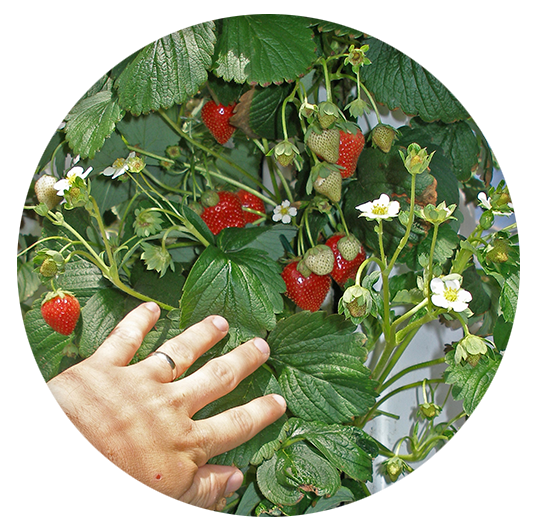 Against the odds of nature, strawberries have persisted through the centuries; this is largely due to human interference. We have bred strawberries from their tiny ancestors into the meaty red fruit that they are today. And why not?
Against the odds of nature, strawberries have persisted through the centuries; this is largely due to human interference. We have bred strawberries from their tiny ancestors into the meaty red fruit that they are today. And why not?
Strawberries are one of the most beloved crops of humankind, integrated into our lives and menus in hundreds of ways. Last week I chopped up two pounds of berries for strawberry rhubarb pie, a favorite in our cool northern climate. Strawberry lemonade, scented candles, and greeting cards all boast the sweet flavor or elegant shape of the berry. And demand for strawberries is unlikely to slow down any time soon.
High demand and good margins make strawberries a great crop for Upstart Farmers using aquaponics or hydroponics. (For info on growing strawberries in soil, see this page.) Strawberries were the first fruiting crop to live in our ZipGrow Towers back in 2009, and Upstart Farmers have found success with the fruit since. Strawberries are popular at farmers’ markets, CSAs, and restaurants, and your unique growing technique makes them even more novelty.
Interested growers can order strawberries from most big seed companies, like Burpees or Johnny’s Seeds. Dozens of different varieties are available with new varieties being bred every year. Our first ventures into strawberries made the Seascape, a day-neutral variety, our favorite. There are many different varieties on the market that we haven’t tried yet, however, so feel free to experiment. (And let us know about your experience on the Facebook Community!)
Be sure to read up on the variety you’re planting before you purchase it. Different varieties have different environmental preferences and different bearing timelines. (One variety may take a month to start bearing fruit after planting while another may need several months.) Some varieties also only bear for part of the year, even indoors. We recommend ever-bearing or day-neutral varieties for indoor growers.
We highly recommend that you grow hydroponic strawberries from rootstock rather than seed. Vegetative growth (runners) tends to be much faster that sexual reproduction (seeds), so you can cut the time from planting to production by months or years by using rootstock.
Plant strawberries at an angle to keep water off the crown.
Take some extra time to make sure that you’re planting strawberries right. Strawberries are different from other crops. They live for a long time, but they’re also susceptible to many more diseases than most of the crops (greens and herbs) that you’ll be dealing with. Crown or heart rots are a fungal disease that are especially common for strawberries.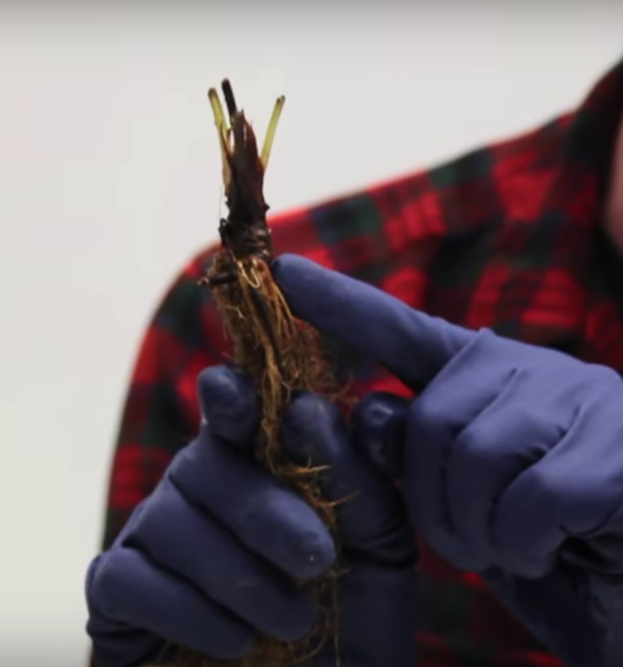
The crown of the plant is the region where the roots become the stem. It’s important to make sure that you keep the crown out of the wet zone.
When you plant your rootstock, choose the plants with thicker crowns and talk to the provider about sterilized rootstock or a recommended fungicide dunk for the rootstock. They will have a good idea of the best fungicides for the rootstock that you can use in your state and with or without certification.
Remember: ALWAYS read the label before using a pesticide. It is a legal document, and straying from instructions is unlawful!
Plant the rootstocks at an angle so that the crown of the plant is angled upward. If the plant is planted at a downward angle, then water can run down the roots and over the crown, creating crown rot problems down the road.
You’ll see a woody “stalk” or stump near the crown of the plant that looks different from the other shoots. That is the remains of the runner from which the plant grew. Try to keep the runner on the upward side of the plant as well.
If you don’t have the space to plant all of your rootstock, you can store it in a fridge or cooler (depending on the variety, most seed companies will tell you to store the rootstock at about 32º F) for a limited time.
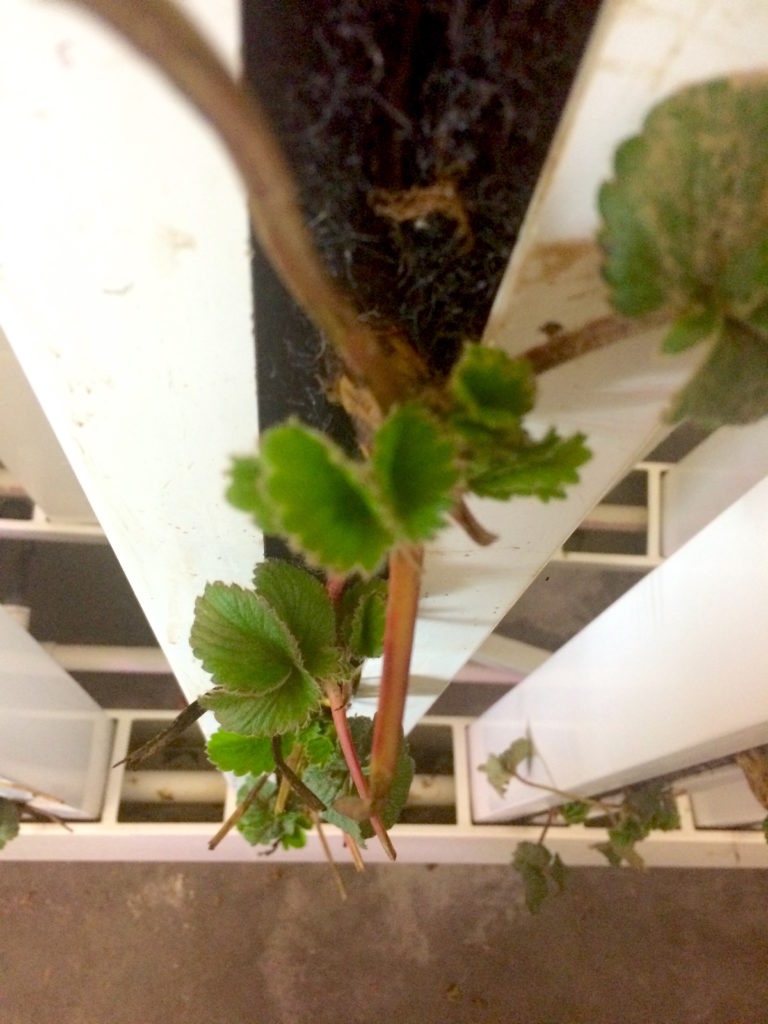 Maintain low salt and plenty of light.
Maintain low salt and plenty of light.
Strawberries prefer lower salt levels (an EC of about 1.0 is best), long day length, and a pH range of 5.5 to 6.0. Keep the temperature in the high 60’s and as always, keep your growing facility dry.
For farmers growing a variety of crops, salt content could be an issue in their strawberry -growing efforts. While strawberries flourish in most hydroponic systems, the high EC levels required by some crops can cause depressed yield for strawberries in the same system.
Pinch back flowers for 4-6 weeks for better yield.
In a healthy system, strawberry rootstock will have new growth sprouting up in less than a week. You can start seeing flowers at about two weeks, but it’s important to pinch back the buds for 4-6 weeks to keep the plant’s resources directed towards vegetative growth. This gives the plant the ability for higher yields later on.
If flowers are allowed to develop, fruit forms and ripens in about 2 weeks. (This does vary some by variety and growing environment.)
Hand pollinate or use natural pollinators
Outdoors, producers can rely on natural pollinators like bees, flies, and birds to spread pollen from the male parts to the female parts of the strawberry plants. Indoors, growers will either have to host a hive (be sure to check with building managers and codes), or hand pollinate.
If you’re growing in an indoor facility (including many greenhouses), one option is to hand pollinate. This can be done with a paintbrush or toothbrush. Lightly disturb the center of the flowers, one after the other. This will spread pollen from flower to flower, replacing the role of the pollinating bee or fly with your own effort.
Hand pollination can take 10–30 seconds per plant. This can be time-consuming on a large scale, so consider keeping bees in your indoor farm.
Happy growing!
Once your plant is mature and producing, keep it healthy by giving it the conditions it needs and managing pests and diseases. The top pests you’ll see are crown rot and mites.
If you have any questions about growing strawberries, please leave them in the comments below! We’ll answer them and then others can learn from your questions and insights on how to grow hydroponic strawberries!
Curious about growing other fruiting crops hydroponically? Check out these posts:
Not taking advantage of Upstart University courses?
Consider Upstart University’s guided courses, which bring you down carefully structured and personalized paths to starting a farm.


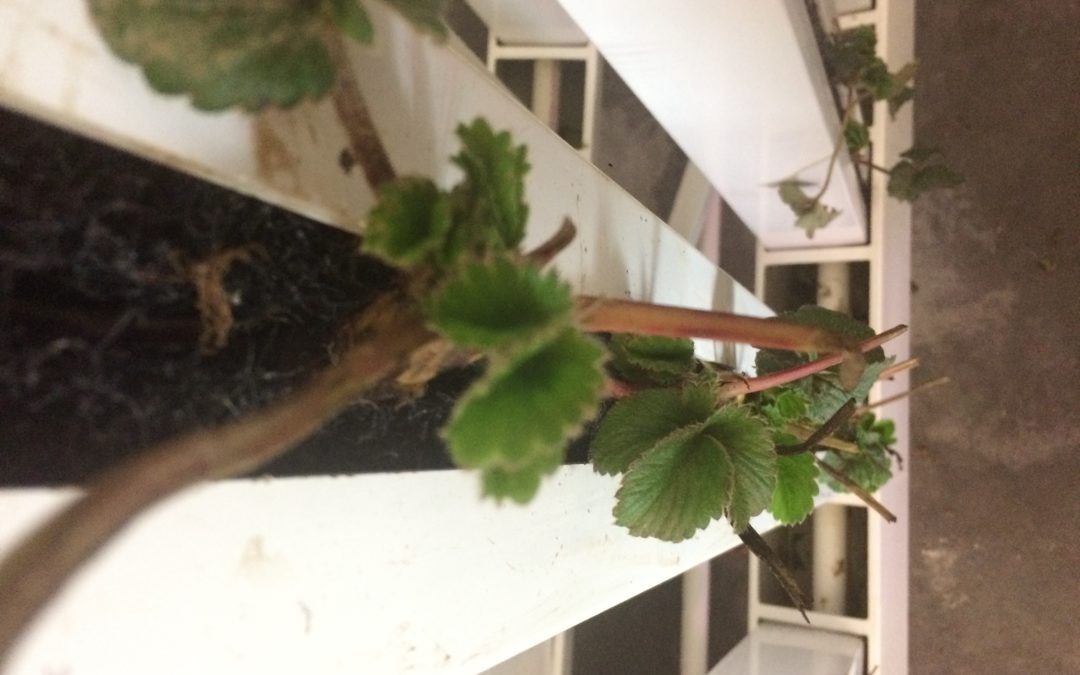
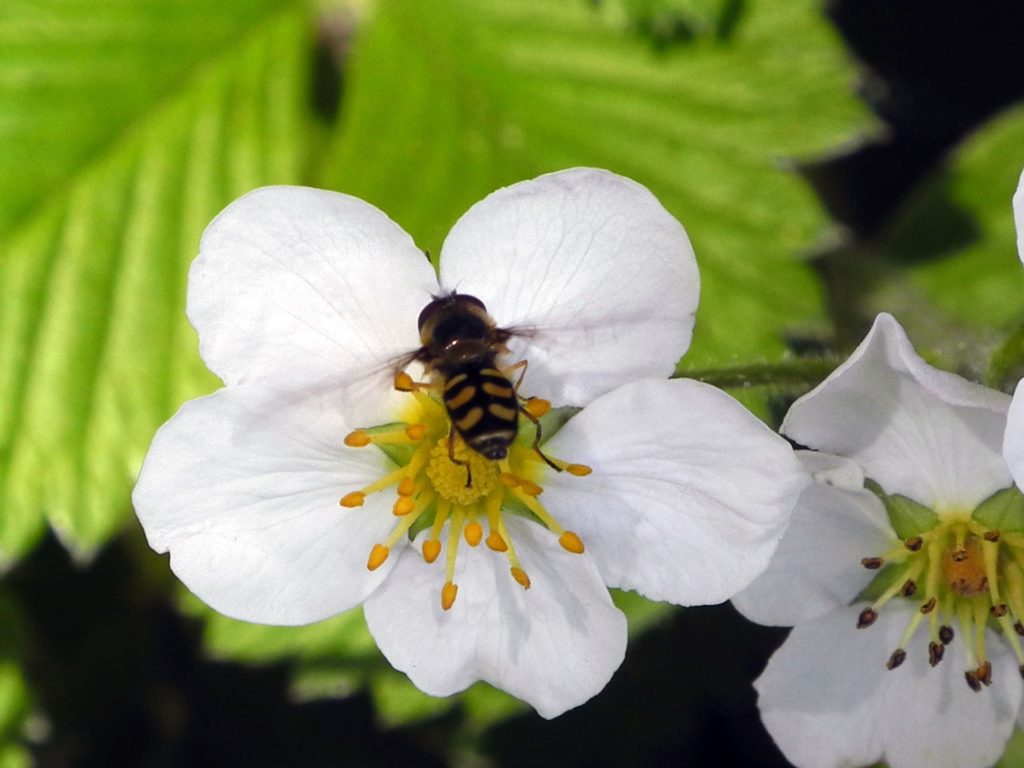

That’s really shredw! Good to see the logic set out so well.
What are the substrate are using in this system, and can you please send me initial production cost of this system?
Hi Arju, we’re using ZipGrow Towers (zipgrow.com) to grow these strawberries. We’d be happy to run through some potential costs and production numbers. Shoot us an email at info@brightagrotech.com for numbers specific to your space, or check out shop.brightagrotech.com.
Hello!
What are the units for the EC values indicated?
Regards!
Collins
Hi Collins, EC is measured in siemens per centimeter, which can be converted to parts per million (ppm) pretty easily either on the meter itself or online.
Micro sec/cm
Hi, I’m interested in getting the zipgrow towers for my rooftop greenhouse. I would like to know what are your estimated yields per strawberry tower (weekly and yearly? Also, what planting density would you recommend for a 9m*14m growing space?
Thanks
We planted our healthy looking bare root strawberry plants, and after just a few days, they put out nice looking leaves, but as a week passes, they get very droopy, and we are slowly loosing plants one by one. Our EC is about 0.5 with using 10-52-10 nutrient. Ph is at 6.2. Ambient air (indoors) is 76 degrees, growing under LED bars for 12 hours on at a time. Any thoughts?
Hey Devan, that sounds like a root disease. Check the roots and then consider sanitation/fungicide dunks. The rootstock supplier usually has a few recommendations on which are the most effective for a certain variety.
How far apart do you recommend placing strawberry plants in zip grow towers? What nutrient solution do you recommend?
how we will get sweet strawberry?
we know much water means less sweet.
Hello—
Sweetness can be attributed to both the content of sugars and volatile compounds present in the berry. Different types of strawberries are known to be more or less sweet. In any case, cooler temperatures during production lead to greater sugar accumulation (sweetness). Ideal production temperatures are typically ~21 C during the day and ~13 C during the night.
Hi what is that one varierty of strawberries that give yeild in a month is it chandler?
Can i plant strawberry in tropical country, where weather is about 35-36 Celsius ?
Hi Robert,
Temperatures that high will likely inhibit flowering and berry production. Here is some good information on producing strawberries in warm climates: https://harvesttotable.com/growing-strawberries-in-hot-summer-climates/
Hi there
i wanted to grow strawberries in hydroponics
would love to know what npk shoud i use ? like 24-12-32 or ?
please can you help me ?
Thank you
What are the lighting requirements for the vegatative (leafing) state vs the fruiting (flowering)? Standard 18/6 veg and 12/12 fruit? Thanks !!
Hi Joseph!
Check out this blog from LumiGrow that talks about the different lighting needs for different crops!
Hi, I want todo know what kind of foam is the one you use.
Thanks
How many crops do you get from a single plant? How long do they produce? do the plants go dormant at some point, this will be may first attempt.
Hello!
Can I start it from seeding in hydroponics(0 week) and then when it has flower, I move it into Zip tower?
Thanks
What’s the recommended ec for young strawberry plants in aerophonic system
Hi, I have grown some hydroponic strawberries from seed and they are now bearing fruit but the fruit is a pale red pinkish colour. Water is 2.25 mS and pH 7.4. The same variety in the garden produced large red fruit.
I’d like to know more about strawberry planting on water